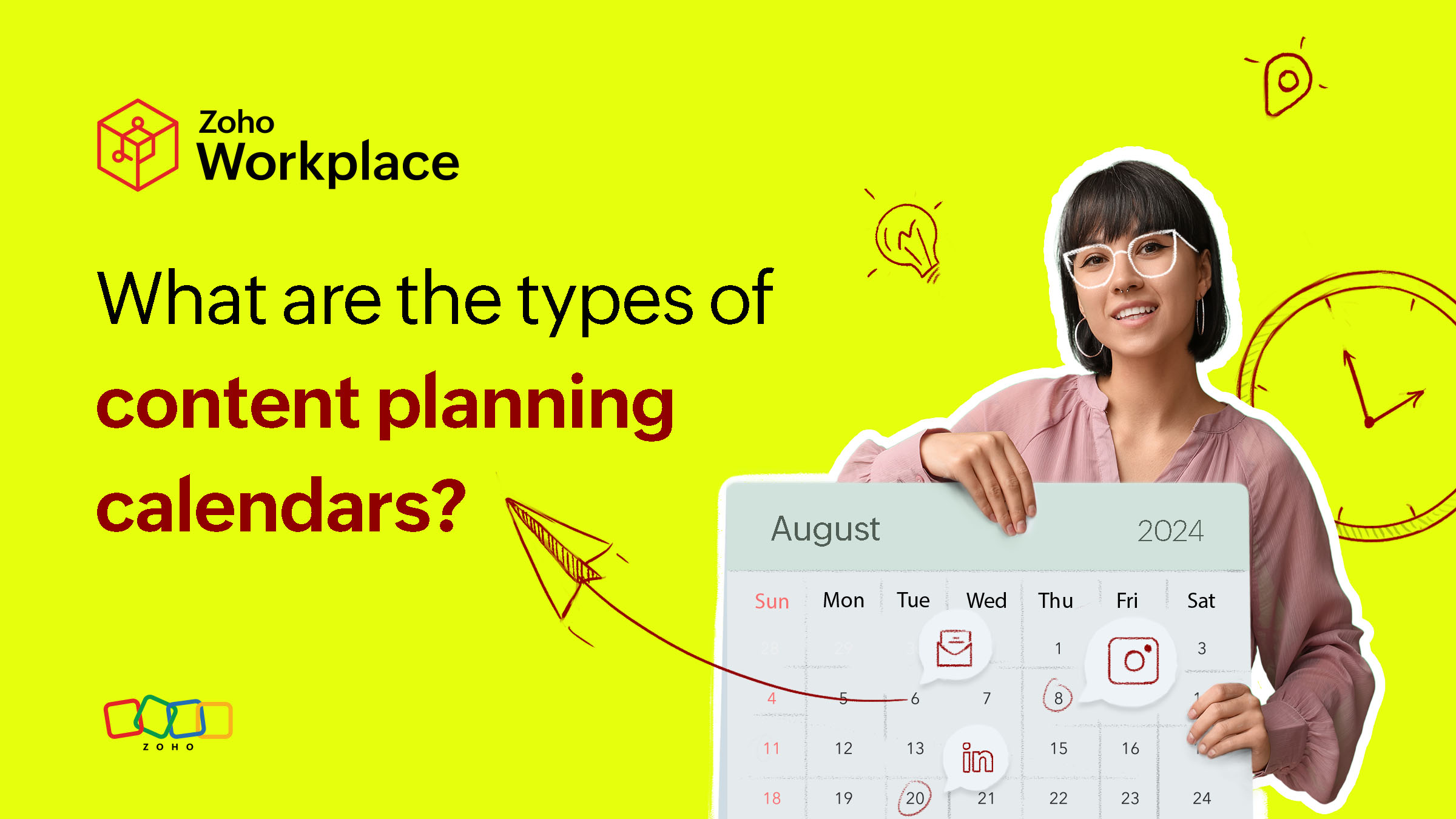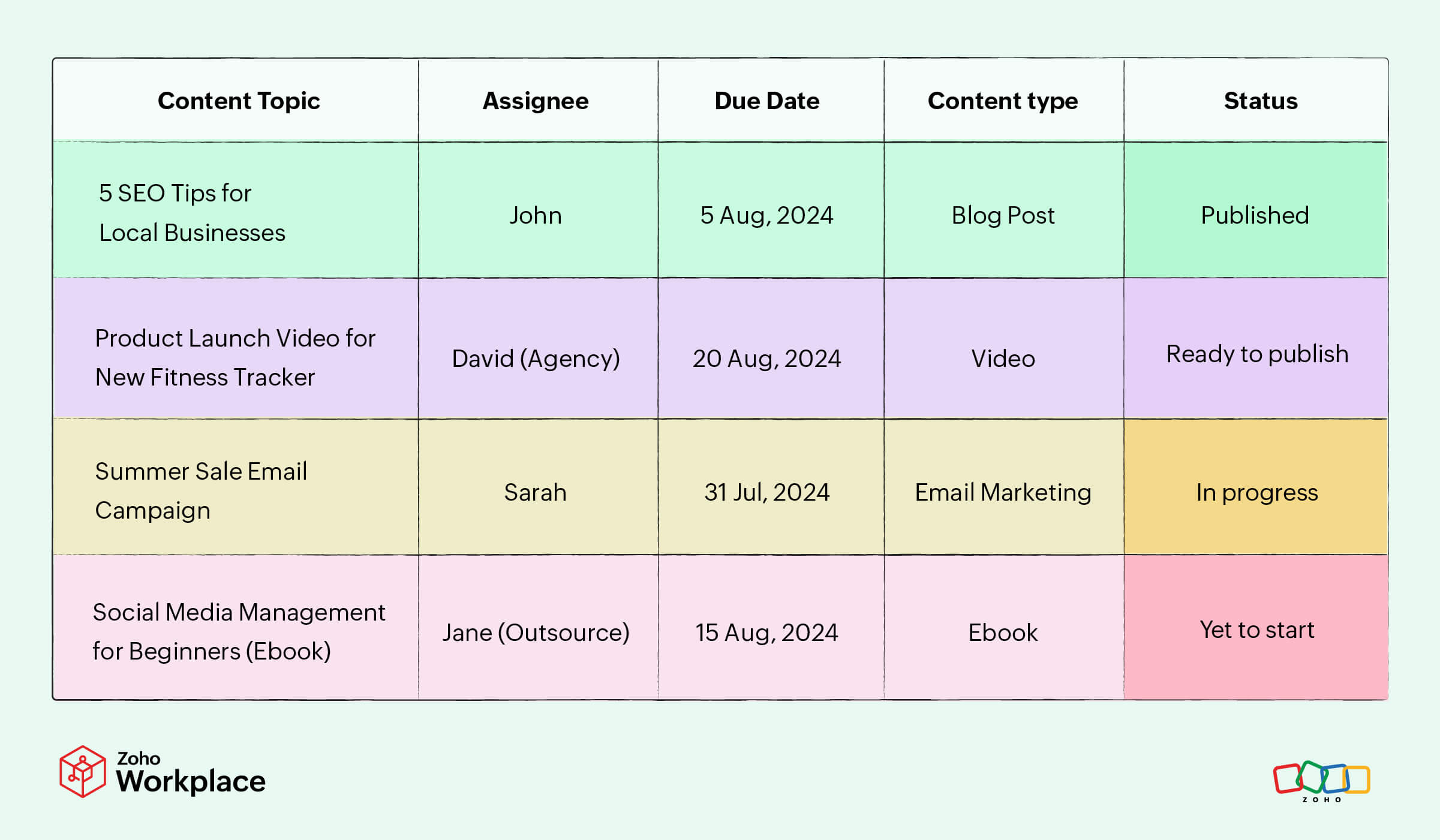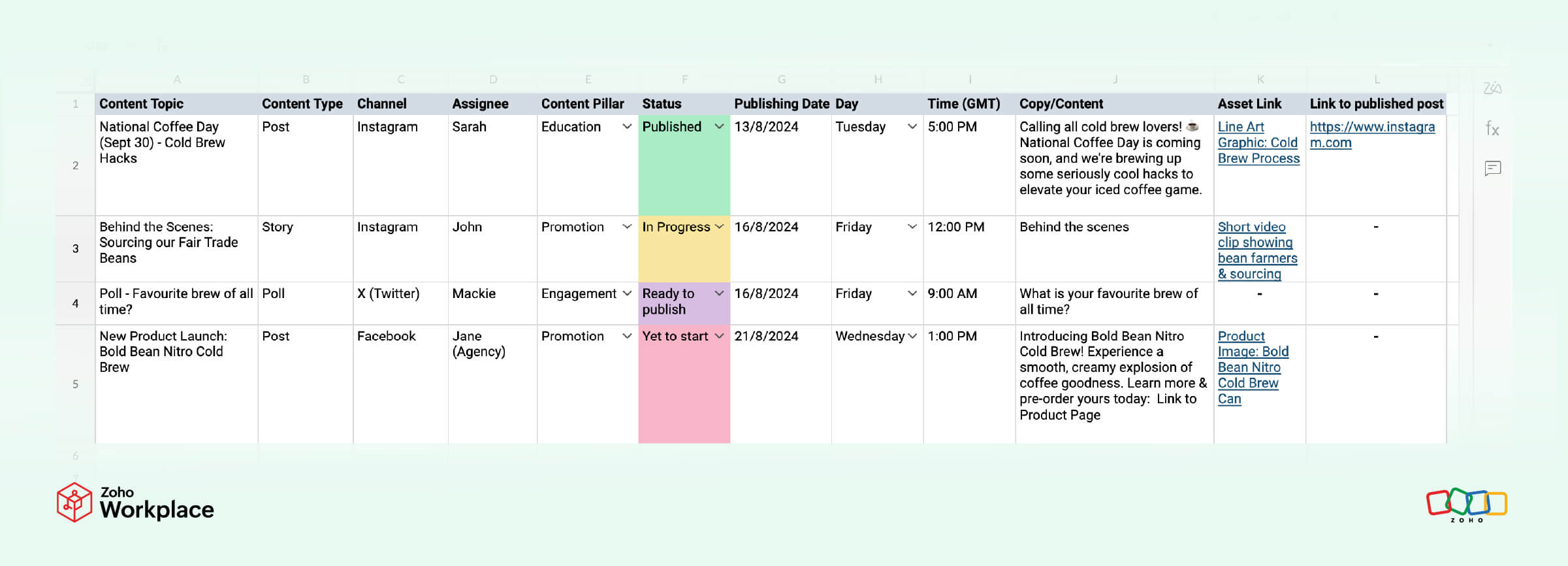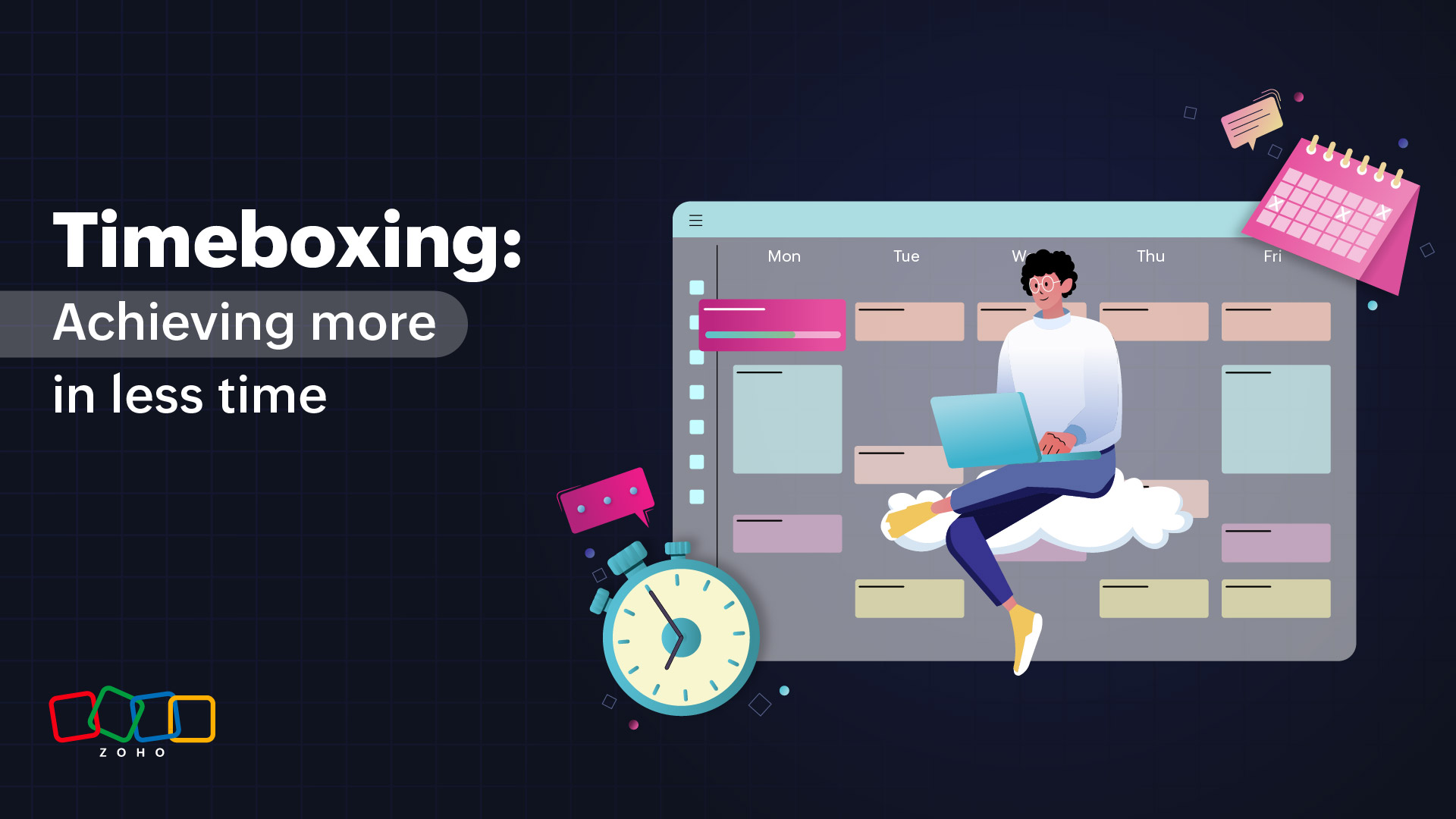- HOME
- All Products
- Calendar
- What are the types of content planning calendars? (With free templates you need)
What are the types of content planning calendars? (With free templates you need)
- Published : July 31, 2024
- Last Updated : October 17, 2024
- 3.1K Views
- 5 Min Read
It’s 9:30 PM on a Sunday, and panic sets in as you realize your presentation is due tomorrow. Yes, the same one you swore you'd work on and had a lot of great ideas for. The week flew by with chores and binge-watching your favorite show. Now, you're creating a slide deck that doesn't scream "put together in one night." A solid plan and calendar would have made this so much easier.
This same concept applies to content creation. Even with a million great ideas, without a content planning calendar, things can spiral.

A brief rundown
In the previous blog post, we explored the components of a content plan—understanding your audience, setting goals, and choosing channels. Now that you’ve got a solid plan, how do you bring it to life? Here's where content calendars come in.
A content calendar isn’t just a schedule. It’s a game plan to turn ideas into action. In this blog post, we’ll look at different types of content calendars, their benefits, and some bonus templates.
What is a content calendar?
A content calendar is a canvas to capture the details needed to achieve your content goals. It shows your content plan for the coming days, weeks, or months—or even a year!

A content calendar contains:
What: Content topics or titles
When: Due dates
Where: Platforms and mediums to publish in
Who: Members who own and manage the content
Assets: Links to content assets (text, images, videos)
Status: Progress update (to be started, in progress, or published)
Beyond these, it may capture the type of content, published dates, and comments. This comes handy while teaming up with others.
Why do you need a content calendar?
Consistency: Posting regularly is like keeping a promise to your audience. It builds trust and keeps them engaged. A content calendar ensures you stick to your content plan without a hitch.
Team collaboration: With a content calendar, everyone on your team knows what’s coming up, who’s responsible for what, and when things are due.
Efficiency: When you plan content ahead, you manage resources better and avoid those frantic, last-minute rushes.
Strategic planning: You can align your content with key dates, campaigns, and audience interests. Every piece of content hits the mark, and it avoids scheduling conflicts too.
Now, is there more than one type of content calendar? In short, yes. They can be categorized based on the content strategy, the platforms used, and the purpose they serve.
Types of content calendars
There’s no one-size-fits-all when it comes to digital content calendars. Depending on your needs, different types can help you manage various aspects of your content strategy.
1. Omnichannel content calendar
An omnichannel content calendar brings together all of your content in one place. It gives you the big picture across multiple channels, from blogs to social media and email newsletters.
Who uses it?
This type of calendar is perfect for businesses and marketers who handle multiple channels. Whether you're a small business or a large enterprise, it helps you stay organized and on track.
What do we need to create it?
Content ideas: List topics and ideas for future posts.
Due dates: Set dates for drafting, reviewing, and publishing.
Assign roles: Decide who’s writing, editing, and publishing.
Quick tips:
Identify the best channels for each piece of content.
Tailor content according to the channels.
Adapt your content based on trends and feedback.

👉 Download the omnichannel calendar template
Note: We recommended using Zoho Sheet (Sign up for free!) for an optimal experience.
2. A dedicated content calendar
Sometimes, you need to buckle down and focus on one type of content. That's where dedicated content calendars come in. They're specialized for your content strategy.
Let's break down the two main types: a blog editorial calendar and a social media content calendar.
Blog editorial calendar
A blog editorial calendar is the blueprint for your blog. It helps you plan, create, and manage blog posts along with topics, deadlines, and schedules.
Who uses it?
It's essential for bloggers and content marketers who need to keep their blog posts on track and on time.
What do we need to create it?
Deadlines: Mark dates for drafts, reviews, and publishing.
Channels: Decide on the channels, such as websites or blogging platforms.
Keywords: List topics that engage your audience and research relevant keywords.
Quick tips:
List keywords and CTAs (calls-to-action) in your editorial calendar.
Plan your blog posts at least a month in advance.
Stick to each deadline (drafting, reviewing, and publishing).
Schedule your blogs around 8 AM to 11 AM on weekdays.

👉 Download the blog editorial calendar template
Social media content calendar
A social media content calendar gives you the content and posting schedule across various social platforms. It helps you manage content themes, posting frequency, and engagement strategies.
Who uses it?
It's ideal for social media managers and marketers handling content across multiple channels.
What do we need to create it?
Platform specifics: Identify the social media platforms you'll be posting on.
Posting schedule: Plan your posts and timing.
Asset links: Gather links to your assets like images, videos, or posters.
Quick tips:
Craft content specifically for each social media platform. For instance, images and carousels work better on Instagram.
Find the best times to post your content on each medium to gain maximum engagement.
Use tools like Zoho Social to schedule and automate your posts.

👉 Download the social media calendar template
Note: This template gives you a bird's-eye view of all of your social media content across multiple platforms. Alternatively, you can maintain separate content calendars for each platform if it suits your needs.
Best time to post on social media
Knowing when to post is like catching the perfect wave—the timing is key. It can significantly boost your content's performance and get more eyeballs on it. Here’s a general guideline for the best times to post on various platforms.

Wrapping up
So, there you have it—the lowdown on content calendars. Whether you’re taking a holistic approach or zeroing in on blog posts, emails, or social media, a calendar keeps your content consistent, organized, and perfectly aligned to your goals. Remember, you can always download the free templates to get started!
 Srinath Vijayakumar
Srinath VijayakumarSrinath is a product marketer for Zoho Workplace. He talks about productivity, tips to improve communication, and nuggets on doing your best at your workplace. He has great interest in bringing a fresh perspective to the forefront. He is highly optimistic to the extent that he opens the refrigerator every 10 minutes, hoping to find something new. Outside of work, you will catch him playing football, travelling or writing half-finished stories.


